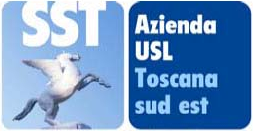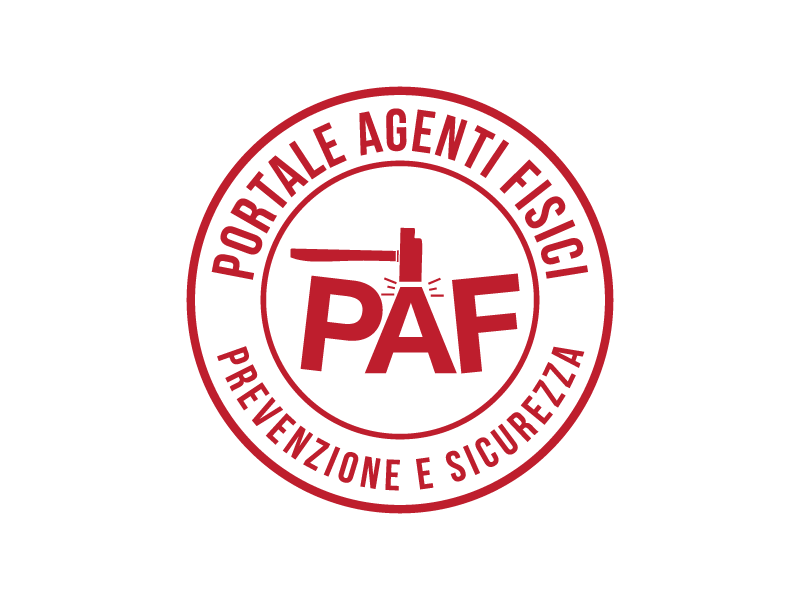Electromagnetic fields [0 Hz - 300 GHz]- ASSESSMENT
In collaboration with

In this section some key aspects of the proper assessment of risks for workers arising from the electromagnetic fields [0 Hz- 300 GHz] are discussed, with reference to the European Directive 2013/35/UE on the minimum health and safety requirements regarding the exposure of workers to the risks arising from physical agents (electromagnetic fields).
Firstly, it should be considered that the law is intended to prevent both DIRECT and INDIRECT biophysical effects.
The INDIRECT EFFECTS typically arise at exposure levels much lower than the Action Levels set by the law for preventing the direct effects and can have serious consequences on health (i.e. particularly sensitive subjects) and on safety (i.e. explosion and fire risk).
INDIRECT EFFECTS CAN BE PREVENTED by verifying, in the first place, if the working environment is compliant with reference levels for the general public set out in Council Recommendation 1999/519/EC. Areas where the general public exposure limits are found to be exceeded shall be adequately indicated and the access shall be forbidden to those individuals with specific contraindications to exposure.
The most important indirect effect that shall be prevented, as it shows the lowest onset threshold, generally is the malfunction of Active Implanted Electronic Devices (e.g. implanted defibrillators or pacemakers): as this equipment can play a vital role, the consequences of an interference could be even very severe or life-threatening.
The Action Levels and the Exposure Limit Values set for in the European Directive 2013/35UE apply only to professionally exposed workers who have not specific contraindications to EMF exposure.
Therefore, when assessing the risk, the first step to undertake is to identify the areas where the reference levels for the GENERAL PUBLIC, as set in Recommendation 1999/519/CE, are exceeded. These areas shall be delimited in order to prevent the accidental access to sensitive subjects, in particular people wearing active implanted medical devices. Sensitive subjects, indeed are not protected by the respect of action levels for workers set up in Directive 2013/35/EU.
As in the case of other kinds of risks, in order to perform a correct and efficient risk assessment it is necessary to refer to the overall technical regulations, including the local law transposing European Directive 2013/35. Each user of the Portal shall refer to the local laws of his/her country.
Hereafter the elements to take into account when assessing the risk.
Identification of Professionally Exposed Workers
In a working environment where sources that entail an EMF risk are present, it is necessary, in the first place, to identify the workers that are professionally exposed to the EMF and for which the action levels for workers indicated in the European Directive 2013/35 shall be applied, and the workers that shall be considered as "general population", for which the levels indicated in the Council Recommendation of 12 July 1999 shall be applied.
Therefore, it is important to keep in mind that the general public limit values shall be applied for non professionally exposed workers, according to the definition given in the law. The limit values for the general public generally guarantee the absence of effects on all exposed subjects, unless in presence of specific contraindications that shall be indicated either by the manufacturer of the implanted electronic devices or by the manufacturer of the specific machines that potentially interfere with the implanted electronic devices, as foreseen by the related standard products (e.g. cell phones, magnetic gates etc.). The limit values indicated for the general public become thus relevant even in the workplaces, for all non professionally exposed employees, also considering the presence of subjects that are particularly sensitive to the risk. For this reason, the zoning of the electromagnetic field source shall be performed by considering both the reference levels for the general public and the action levels for workers.
Identification of EMF risk sources
One of the main reference that can be used for the purposes of risk assessment of workers exposed to the electromagnetic fields is the standard EN 50499 “Procedure for the assessment of the exposure of workers to electromagnetic fields”. This standard foresees a first intervention step, called initial assessment, that essentially consists in a census of the workplaces and work equipment. These shall be classified based on criteria that concern the possibility that reference levels for the general public can be exceeded. In particular, the following are considered "a priori compliant” :
• all the equipment that can not emit fields with an intensity higher than reference levels for the general public is considered a priori compliant to the standard (and is sometimes referred as trivial sources);
• all the workplaces inside which the reference levels for the general public are respected are also considered as a priori compliant.
According to the standard, in the case of workplaces in which only the a priori compliant equipment is present, the risk assessment is essentially concluded with the initial census. For the workplaces where equipment that can emit fields with an intensity exceeding the reference levels for the general public, the standard establishes that an additional assessment procedure is necessary.
In order to support the assessor, the standard EN 50499 contains two tables, the first of which includes the a priori compliant workplaces and work equipment, while the second includes a list of equipment for which it is necessary to proceed to an additional assessment.
Tab. 1 - A priori compliant workplaces and work equipment. Non exhaustive list.
|
Type of equipment / condition |
Note |
|
All the activities that exclusively take place in environments lacking electrical systems and equipment and permanent magnets |
|
|
Workplaces involved in EMF emissions authorized in accordance with national standard for protection of the general population, with the exclusion of maintenance operations or other activities performed over or in close proximity to the sources |
The employer must verify to be in possession of the authorisation in accordance with national law or request to the managing authority a declaration of respect of the national law in the field |
|
Use of low frequency equipment (as defined by the EN 50371 standard: frequency emission 10 MHz¸300 GHz and average transmitted power up to 20 mW and 20 W of peak), even if not CE marked |
The maintenance activities are not included |
|
Use of CE marked equipment, assessed against harmonised EMF standards List subject to frequent updates:
|
The equipment must have been installed and must be used in accordance with the manufacturers´ instructions.
Maintenance activities are not included.
The employer must verify on the use and maintenance manual that the equipment has been declared as compliant to the adequate product standard |
|
Equipment placed on the European market in compliance with the European recommendation 1999/519/EC that do not require the CE marking, for example if it is part of an installation |
|
|
Lighting equipment (lamps) |
Excluding specialized RF energized lighting |
|
Computer and IT equipment |
|
|
Office equipment |
Tape erasers may need further assessment. |
|
Mobile phones, and cordless phones |
|
|
Two-way radios |
Only types with time averaged emitted power less than 20 mW |
|
Base stations for DECT cordless phones and WLAN |
Limited to equipment intended for use by the general public |
|
Non - wireless communication equipment and networks |
|
|
Electric handheld and transportable tools |
e.g..: covered by the scope of EN 60745-1 and EN 61029-1 concerning safety of hand-held motor operated tools. |
|
Portable heating tools (excluding induction and dielectric heating tools) |
e.g.: covered by the scope of EN 60335-2-45 (e.g. glue guns, heat guns) |
|
Battery chargers |
Including chargers for normal household use and chargers intended for use in garages, shops, light industry and on farms (EN 60335-2-29) |
|
Electric operated garden appliances |
|
|
Audio & video equipment |
special types using radio transmitters typically used by the broadcast industry may need further assessment. |
|
Portable battery powered equipment not including radio frequency transmitters |
|
|
Electrical room heating equipment |
excluding microwave heaters |
|
Electricity supply networks (50 Hz) in the work place. The magnetic and electric field exposure must be considered separately..
For magnetic field exposures the following are compliant:
For electric field exposures the following are compliant:
|
|
|
Instrumentation, measurement and control equipment |
|
|
Household appliances |
Professional appliances like cookers, laundry machines, microwave ovens etc. used in restaurants, shops etc. are also included in this table. Professional inductive cooking equipment needs further assessment. |
|
Computer and IT terminal equipment having wireless communication |
e.g.: WLAN (e.g. Wi-Fi), Bluetooth and similar technologies. Limited to equipment intended for use by the general public. |
|
Battery driven transmitters |
Limited to equipment intended for use by the general public |
|
Base stations antennas |
Further assessment is only relevant if workers can get closer to the antenna than the defined safety distance in relation to the public exposure limits |
|
All medical equipment not using intentional radiation with electromagnetic exposure or application of currents. |
|
Therefore, the work places which are, generally, compliant based on Table 1 are: offices, computer centers, shops, hotels, hairdressers etc.
Table 2 is a non-exhaustive list of equipment which requires further EMF assessment, as it can cause exposures that exceed the reference levels for general population or action levels for workers:
Table 2 – Examples of equipment likely to require further EMF risk assessment and the adoption of protection measures
|
1 |
Industrial electrolysis |
|
2 |
Electrical welding and melting |
|
3 |
Induction heating |
|
4 |
RF and MW dielectric heating |
|
5 |
Dielectric welding |
|
6 |
Industrial magnetizer/demagnetizers Including bulk tape erasers, magnetic activator / deactivator of electronic article surveillance (EAS) systems not certified in accordance with EN 50364 |
|
7 |
Specialized RF energized lighting |
|
8 |
RF plasma devices |
|
9 |
All medical equipment using intentional radiation with electromagnetic exposure or application of currents:
All medical treatment equipment using time averaged emitted high power (> 100 mW) RF sources |
|
10 |
Electric crack detector systems |
|
11 |
Radars |
|
12 |
Electrically driven transport: trains and trams |
|
13 |
Industrial microwave heating and drying |
|
14 |
Base station antennas (workers involved in installation and maintenance operations) |
|
15 |
Electricity supply networks in the work place that do not satisfy the criteria given in Table 1 |








